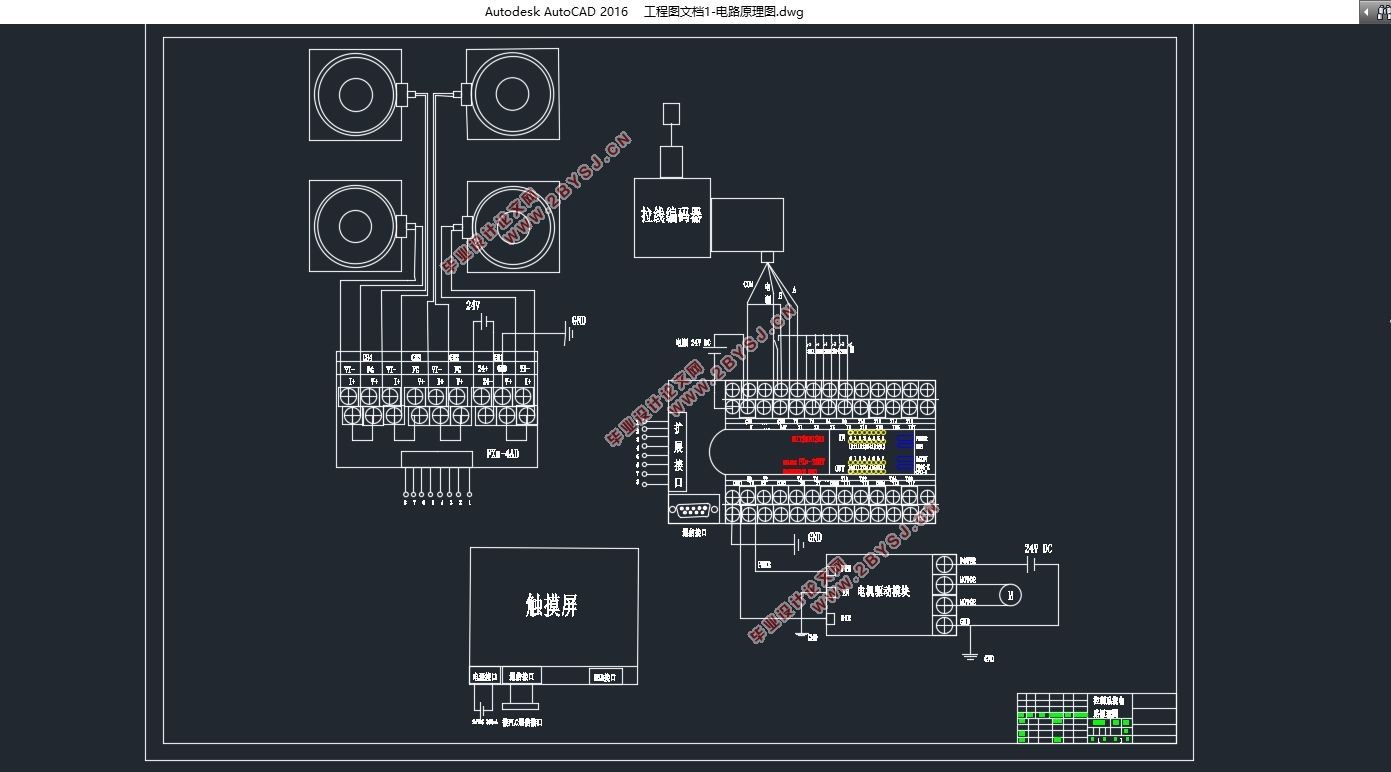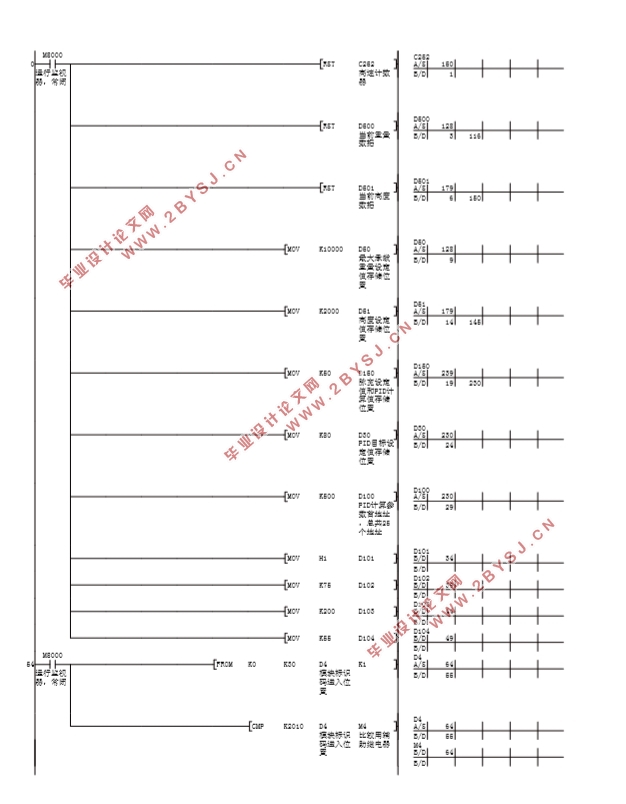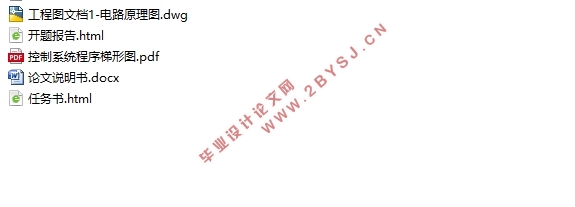基于PLC及触摸屏的多功能升降平台测控系统设计(三菱FX2N,电路原理图,梯形图
无需注册登录,支付后按照提示操作即可获取该资料.
基于PLC及触摸屏的多功能升降平台测控系统设计(三菱FX2N,电路原理图,梯形图)(任务书,开题报告,论文说明书17000字,CAD电路原理图,PDF梯形图)
摘 要
本文通过对当前液压升降平台的控制系统进行分析和总结,设计了基于PLC控制和触摸屏操作下的多功能升降平台,使得传统的继电器-接触器控制的升降平台得到了功能升级,自动化控制也让平台的实用性大大提高。通过对平台升降参数检测方案的设计和传感器的选择,以及电机控制方案的设计,在硬件方面平台采用模块化的控制器件,使得元器件集成化程度大大提高,控制电路得到简化,而且用大晶体管控制电机调速和正反转,也使得控制效率提高。最后,采用直流蓄电瓶作为能源供给,使得平台在空间上的灵活性得到极大地提升。
关键词:升降平台;PLC;传感器;触摸屏
Abstract
Based on the analysis and summarization of the current hydraulic lifting platform control system, this paper designs a multi-function lifting platform based on PLC control and touch screen operation, which makes the traditional relay-contactor controlled lifting platform been upgraded. The practicality of the platform greatly improved. Through the design of the platform lift parameter detection scheme and the choice of the sensor, as well as the design of the motor control scheme, the modular control device is adopted in the hardware aspect, which greatly improves the integration degree of the components, simplifies the control circuit, and uses the large transistor Control motor speed and forward and reverse, but also makes the control efficiency. Finally, the use of DC battery as an energy supply, making the platform in the space of the flexibility to be greatly improved.
Key Words: lifting platform; PLC; sensor; touch screen



目录
第1章 绪论 1
1.1 研究的背景和意义 1
1.2 国内外研究现状 2
1.3 研究内容和目标 2
第2章 总体方案设计 4
2.1 设计控制系统的总体方案 4
2.1.1 设计控制系统方案框图 4
2.1.2 设计控制系统原理图 4
2.1.3 分析各个元件的工作需求 5
2.2 电源方案和传动方案的分析 6
2.2.1 电源方案的分析 6
2.2.2 传动方案的分析 6
2.3 本章小结 7
第3章 PLC控制的传感器检测系统设计 8
3.1 PLC的选型 8
3.1.1 可编程逻辑控制器PLC 8
3.1.2 I/O接口计算和PLC选型 8
3.2 位移、速度测量系统的设计 9
3.2.1 光电编码器的原理和选型 10
3.2.2 测量电路设计 11
3.3 称重方案的设计 12
3.3.1 传感器的选型 13
3.3.2 称重电路的设计 15
3.4本章小结 17
第4章 电机控制系统设计和PLC控制电路原理图 18
4.1 电机控制系统设计 18
4.1.1 直流电机调速方式 18
4.1.2直流电机PWM调速原理 18
4.1.3 电机控制和调速系统设计 20
4.2 PLC控制电路原理图 24
4.3本章小结 24
第5章 PLC控制程序设计和触摸屏软件设计 25
5.1 PLC控制程序设计 25
5.1.1 速度检测部分梯形图程序设计 25
5.1.2 称重部分梯形图程序设计 27
5.1.3 电机控制部分梯形图程序设计 29
5.1.4 PLC控制系统程序梯形图 31
5.2 触摸屏软件设计 34
5.2.1 采用触摸屏操作界面优点 35
5.2.2 EB8000软件的介绍 35
5.2.3 软件设计界面的说明 35
5.3 本章小结 38
结 论 39
参考文献 40
致谢 41
